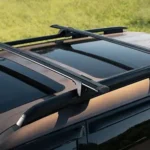Boxcars have been the backbone of rail freight transportation, and the Santa Fe Railway’s innovations in boxcar design have left an indelible mark on the industry. From early wooden structures to advanced steel designs, Santa Fe’s boxcars have continually adapted to the needs of a growing nation.
Early Designs: Wooden Boxcars
In the early 20th century, Santa Fe’s boxcars were primarily constructed from wood. A notable example is the Santa Fe 44043, built in 1910 by the American Car & Foundry. This 36-foot-long wooden boxcar featured truss rods and was part of the Bx-W class, serving as a standard for general freight during that era.
Also Read N: The Fascinating World of Words That Start With FH: Uncovering Linguistic Rarities
Transition to Steel: The Bx-3 and Bx-6 Classes
As the demand for stronger and more durable freight cars grew, the Santa Fe Railway transitioned to steel-framed designs. Between 1923 and 1926, they introduced the Bx-3 and Bx-6 classes, totaling 5,000 cars. These boxcars featured inverted hat-shaped vertical posts and flat steel diagonals, with wooden sheathing inserted between the posts. This innovative design provided enhanced strength and rigidity without significantly increasing weight.
Also Read P: Fostech AK Binary Trigger: A Game-Changer for AK Enthusiasts
Innovations in Freight Protection: Shock Control Era
In the mid-20th century, the Santa Fe Railway introduced the “Shock Control” system to minimize freight damage during transit. Starting with the Bx-66 class in 1954, boxcars were equipped with hydraulic cushion underframes featuring sliding center sills. This technology absorbed impacts during coupling and decoupling, ensuring safer transportation of goods.
Preservation Efforts: Honoring the Legacy
Several Santa Fe boxcars have been preserved in museums, showcasing the evolution of rail freight transportation. For instance, the Oklahoma Railway Museum houses the Santa Fe 48169, a wooden boxcar built in 1912 by the Standard Steel Car Company. This 36-foot car serves as a tangible link to the past, illustrating the craftsmanship and design of early 20th-century railcars.
Conclusion
The Santa Fe Railway’s boxcars have played a crucial role in shaping the freight transportation landscape of the United States. Through continuous innovation and adaptation, these boxcars have not only met the evolving needs of commerce but have also left a lasting legacy that continues to be celebrated in museums and by rail enthusiasts nationwide.
FAQs
- What materials were used in the construction of early Santa Fe boxcars? Early Santa Fe boxcars were primarily constructed from wood, featuring designs like truss rods for structural support.
- How did the “Shock Control” system benefit freight transportation? The “Shock Control” system utilized hydraulic cushion underframes with sliding center sills to absorb impacts during transit, reducing freight damage.
- What is a notable example of a preserved Santa Fe boxcar? The Santa Fe 48169, a wooden boxcar built in 1912, is preserved at the Oklahoma Railway Museum.
- When did Santa Fe transition from wooden to steel-framed boxcars? The transition occurred in the 1920s, with the introduction of steel-framed designs like the Bx-3 and Bx-6 classes between 1923 and 1926.
- How many boxcars were included in the Bx-3 and Bx-6 classes? A total of 5,000 boxcars were built across the Bx-3 and Bx-6 classes during the 1920s.










